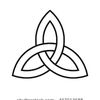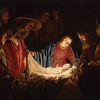4.5.2011 | 14:05
Hvernig vitum viš aš Osama er lįtinn?
Ég tel aš fólk almennt hafi lķtiš hugsaš śt ķ hvernig viš vitum eitthvaš fyrir vķst. Hvernig t.d. vitum viš hvort aš Osama Bin Laden er dįinn? Allt ķ lagi, viš höfum vitnisburš en žeir geta veriš aš ljśga. Žaš geta allir logiš, žaš er alltaf möguleiki aš viškomandi hafi leynda įstęšu til aš ljśga. Ķ žessu tilviki hafa stjórnvöld hellings įstęšu til aš ljśga, svo mikiš er vķst. Ķ žśsundir įra žį hefur mannkyniš ašeins geta reytt sig į vitnisburš fólks um fjarlęgja staši og lišna atburši. Ķ dag erum viš ķ ašeins betri stöšu, viš höfum t.d. ljósmyndir, myndbönd og hljóšupptökur. Žetta gerir žaš aš verkum aš ķ žeim tilvikum sem viš höfum slķkar heimildir žį eykst trśveršugleikinn en viš sitjum samt uppi meš aš myndin getur veriš fölsuš eša myndbandiš getur veriš svišsett. Trśveršugleikinn eykst er mašur getur ķ raun og veru aldrei veriš 100% viss. Žarna er einmitt lykiloršiš, trśveršugleikinn eša trśin. Mér finnst gott aš hugsa žetta žannig aš mķn žekking er skipt upp ķ fullvissu og trś. Ķ žessu dęmi meš Osama žį er mķn fullvissa 80% og mķn trś 20%. Sem sagt, nokkuš viss um aš Osama er lįtinn eins og stjórnvöld ķ Bandarķkjunum segja.
Ķ žessu samhengi langar mig aš benda į samtal viš mann aš nafni Moshe Averick um hvernig viš vitum/trśum aš Mósebękurnar voru skrifašar į tķmum Móse, hérna er žaš sem hann hafši um mįliš aš segja:
Evidence: Can we trust traditional texts to be reliable?
There are many safeguards in Jewish law and practice to preserve the integrity of the Torah scroll. However, the simplest and most obvious evidence of how well the system works, is that after the founding of the State of Israel, Jews from every corner of the world brought their own Torah Scrolls and the ones from Yemen ( whose community was over 2000 years old) matched the ones from Poland. This, despite the fact that there are over 300,000 letters in the Torah.
The scrolls are all handwritten, it is absolutely forbidden to use a printing press to create a Torah scroll, and a new scroll can only be copied from an already existent one. The scroll is read from publicly three times a week, Monday, Thursday and Shabbat. There are no vowels or punctuation in the scroll, if the reader makes a mistake (everyone follows from a printed edition) he is immediately stopped and must repeat the word properly.
If it turns out that there is a mistake in the text, even one letter, it is forbidden to read from it publicly and is immediately put back in the ark with a distinct sign that it is invalid, until it is repaired by a qualified scribe. Unless you have actually seen how quickly the reader is jumped on by the congregation if he makes a mistake, and unless you have actually watched a Torah scroll invalidated in the middle of the service and put back in the ark, it is hard to really understand how exacting this process is.
It is also important to understand the reverence that the community has for the Torah scroll. I’m not talking about orthodox communities, that goes without saying, I’m even talking about the most Reform, liberal congregations. They might eat on Yom Kippur, but no one, and I mean no one messes with a Torah scroll. It would be unthinkable (this is something that can only be known from experience) for the most liberal Reform congregation to write their own version of a Torah scroll, and this is despite the fact that they claim to believe that the whole thing is a bunch of man made myths.
There are 5-6 letter differences between the scroll of the Arab-Jewish communities and the eastern European Jewish communities. These are all letters that are silent in the words, and none change the meaning or pronunciation of a word or phrase. Example: Thouht and Thought , foreign and forein, etc.
Torah scrolls can easily used for up to 100 years, which means that the transmission process really only has to happen 30-40 times. This takes you back over 3000 years to the final writing of the Torah at the end of the 40 years in the desert.
I replied,
It is a good example of the use of an oral tradition to correct a written tradition as well as the durability of a written tradition – if anyone cares about it. Oral traditions are not necessarily so subject to corruption as the original commenter seemed to think. He is confusing situations where no one cares much with ones where they do and must care.Ancient Greek myths of the gods were examples of situations where no one cared much. There were many variant accounts of the soap opera lives of the pagan gods, and the only bottom to the confusion is that a good editor would sometimes fashion an account that – being a good story – would simply get told more often until it became the standard story. Somewhat like one soap opera being way more popular than others, but it was all just nonsense. Think Homer. That was a Darwinian system! – the story was shaped for fitness, not for truth. Of course, after a while, people got tired of truth-optional religion, which is why you and I are where we are today and the Greek gods are just garden statues somewhere

|
Mynd af lķki Osama hryllileg |
| Tilkynna um óvišeigandi tengingu viš frétt | |
Bloggfęrslur 4. maķ 2011
Um bloggiš
Mofa blogg
Fęrsluflokkar
- Bloggar
- Bækur
- Dægurmál
- Ferðalög
- Fjármál
- Fjölmiðlar
- Heilbrigðismál
- Heimspeki
- Íþróttir
- Kjaramál
- Kvikmyndir
- Lífstíll
- Ljóð
- Löggæsla
- Mannréttindi
- Matur og drykkur
- Menning og listir
- Menntun og skóli
- Samgöngur
- Sjónvarp
- Spaugilegt
- Spil og leikir
- Stjórnmál og samfélag
- Sveitarstjórnarkosningar
- Tónlist
- Trúmál
- Trúmál og siðferði
- Tölvur og tækni
- Umhverfismál
- Utanríkismál/alþjóðamál
- Vefurinn
- Viðskipti og fjármál
- Vinir og fjölskylda
- Vísindi og fræði
Tenglar
Kristnar sķšur
Żmislegt
Sköpun/žróun
Sķšur sem fjalla um sköpun/žróun
- Detecting Design
- UnCommon descent Blogg sķša William Dembski um vitręna hönnun
- Creation-Evolution Headlines Sķša sem fjallar um fréttir tengdar sköpun žróun
- EvolutionNews Sķša sem fjallar um fréttir sem tengjast Vitsmunahönnun
Bloggvinir
- Bergur Thorberg
- Birgirsm
- Brosveitan - Pétur Reynisson
- Bryndís Böðvarsdóttir
- Daníel Þór Þorgrímsson
- Davíð S. Sigurðsson
- Davíð Örn Sveinbjörnsson
- Daði Einarsson
- Dóra litla
- Eva
- Eygló Hjaltalín
- Friðrik Páll Friðriksson
- Georg P Sveinbjörnsson
- Gladius
- Gunnar Ingi Gunnarsson
- Gunnlaugur Halldór Halldórsson
- Guðni Már Henningsson
- Guðrún Sæmundsdóttir
- Guðsteinn Haukur Barkarson
- Gísli Kristjánsson
- Halldóra Hjaltadóttir
- Halldóra Lára Ásgeirsdóttir
- Hjalti Rúnar Ómarsson
- Hörður Finnbogason
- Hörður Halldórsson
- Inga Helgadóttir
- Ingibjörg
- Ingvar Leví Gunnarsson
- Ingvar Valgeirsson
- Janus Hafsteinn Engilbertsson
- Jens Sigurjónsson
- Jóhann Hauksson
- Jóhann Helgason
- Jóhannes Ólafsson Eyfeld
- Jón Hjörleifur Stefánsson
- Jón Ríkharðsson
- Jón Valur Jensson
- Jónatan Gíslason
- Júdas
- Kristin stjórnmálasamtök
- Kristinn Theódórsson
- Kristinn Theódórsson
- Kristinn Ásgrímsson
- Linda
- Mama G
- Morgunstjarnan
- Nonni
- Omnivore
- Predikarinn - Cacoethes scribendi
- Pétur Eyþórsson
- Ragnar Birkir Bjarkarson
- Ragnar Kristján Gestsson
- Ragnar Steinn Ólafsson
- Ragnheiður Katla Laufdal
- Róbert Badí Baldursson
- Rósa Aðalsteinsdóttir
- Rödd í óbyggð, kristilegt félag
- Röddin
- Rúnar Kristjánsson
- Sigurður Þórðarson
- Sigvarður Hans Ísleifsson
- Steinar Immanúel Sörensson
- Styrmir Reynisson
- Svanur Gísli Þorkelsson
- Sverrir Halldórsson
- TARA
- TARA ÓLA/GUÐMUNDSD.
- Theódór Norðkvist
- Tryggvi Hjaltason
- Tímanna Tákn
- Unknown
- Vefritid
- Viðar Freyr Guðmundsson
- gudni.is
- Ólafur Jóhannsson
- Þarfagreinir
- Þórdís Ragnheiður Malmquist
- Alexander Steinarsson Söebech
- Árni Karl Ellertsson
- BookIceland
- Elísa Elíasdóttir
- Fanney Amelía Guðjonsson
- Friðrik Már
- Gestur Halldórsson
- Guðjón E. Hreinberg
- Gunnar Ingvi Hrólfsson
- Gunnar Jóhannesson
- Hulda Þórey Garðarsdóttir
- Jens Guð
- Karl Jóhann Guðnason
- Kristinn Ingi Jónsson
- Lífsréttur
- Mathieu Grettir Skúlason
- Tómas Ibsen Halldórsson
- Valur Arnarson
- Viktor
- Vilhjálmur Örn Vilhjálmsson
Heimsóknir
Flettingar
- Ķ dag (19.9.): 3
- Sl. sólarhring: 3
- Sl. viku: 10
- Frį upphafi: 803616
Annaš
- Innlit ķ dag: 3
- Innlit sl. viku: 10
- Gestir ķ dag: 3
- IP-tölur ķ dag: 3
Uppfęrt į 3 mķn. fresti.
Skżringar






